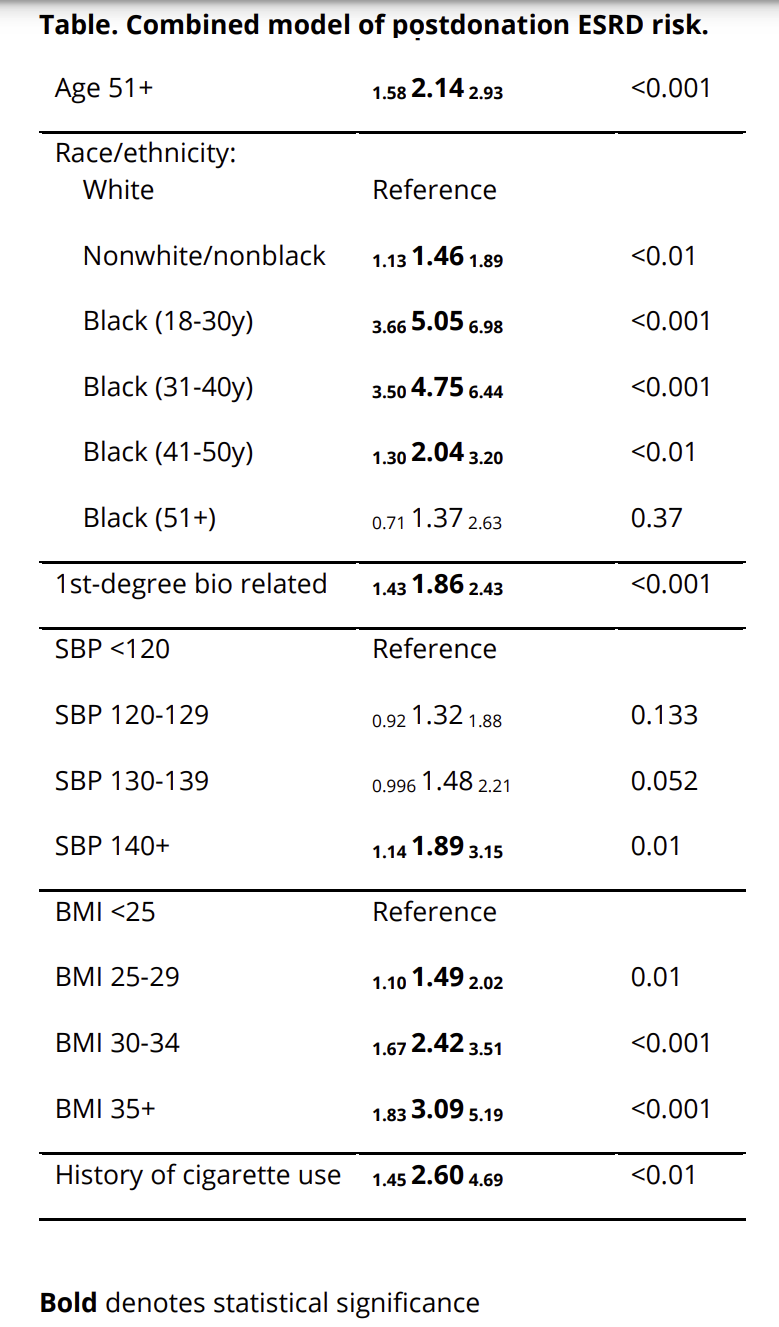Prediction of ESRD risk in living kidney donors through thirty years postdonation
Allan Massie1, Victoria A. Bendersky2, Jon J. Snyder3, Macey L. Levan1, Fawaz Al-Ammary4, Daniel C. Brennan4, Dorry L. Segev1,3.
1Surgery, NYU Langone Transplant Institute, New York, NY, United States; 2Surgery, Johns Hopkins School of Medicine, Baltimore, MD, United States; 3Scientific Registry of Transplant Recipients, Minneapolis, MN, United States; 4Medicine, Johns Hopkins School of Medicine, Baltimore, MD, United States
Introduction: Living kidney donors face increased risk of ESRD, although absolute risk remains low through 20 years postdonation. The ethical practice of living donor nephrectomy depends on accurate estimates of postdonation ESRD risk.
Methods: Using SRTR data 1987-2020, we modeled the association between donor characteristics and ESRD risk: age, sex, race (White/Black/Other), first-degree biological relationship to recipient, predonation systolic blood pressure, predonation eGFR, and BMI, with multiple imputation to handle missingness. We censored for mortality and fit race-stratified models to investigate interactions.
Results: Among 158,304 donors, 589 experienced ESRD. Overall cumulative incidence of ESRD was 0.5% at 20 years postdonation, 1.1% at 25 years postdonation, and 1.5% at 30 years postdonation. 30-year risk of ESRD was higher for first-degree related donors (1.6% vs 0.9%), men (2.1% vs 0.9%), and Black donors (3.6% vs 1.1% White/1.5% Other) (all p<0.01). Older age was associated with increased ESRD risk among White donors but decreased risk among Black donors (Figure). Among nonwhite/nonblack donors, there was no monotonic relationship between age and ESRD risk, with the lowest risk for donors age 31-40 (0.95%) and highest for donors age>50 (2.10%). In multivariable models, higher SBP, BMI>30, and history of cigarette use were associated with increased ESRD risk. There was no evidence of association between predonation eGFR and postdonation ESRD risk, in unadjusted models or after adjusting for age, sex, race, and biological relationship to recipient. The final multivariable model predicted ESRD risk with C-statistic=0.71 (Table).
Conclusion: ESRD risk through 30 years postdonation varies substantially by donor characteristics, and can be estimated based on predonation characteristics. Donor candidates with high predicted risk should be counseled about their ESRD risk and postdonation behaviors that can preserve function in the remaining kidney.



right-click to download
